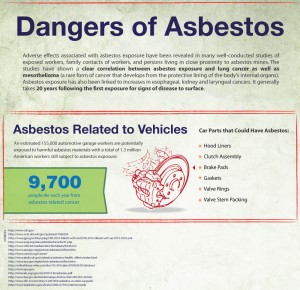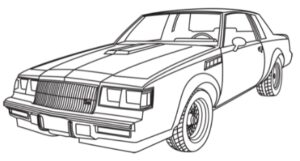
Fixing up and restoring a vintage car like a 1987 Buick Regal Grand National can be fun and rewarding, but it can also be dangerous.
All cars have small amounts of toxins, especially in the exhaust, but vintage cars have more toxins and you can risk exposure when working on these cars.
This article will go through the major toxins, so you know what to look out for.
Lead
Lead is a heavy metal that can accumulate in the body, causing terrible health effects.
In vintage and classic cars, lead is commonly found in batteries and any electrical connections.
However, older cars have lead in many other places.
You can find lead in all the soldered joints, and it was also used during that time period to fix dents and in other bodywork applications.
You will most often face lead exposure if you are sanding the car, so take care to use light sanders and definitely wear protection before working on the car.
Paint Toxins
The paints used to achieve certain colors, especially yellow and red, have toxic substances that can cause cancer or other health problems.
Yellow and red used cadmium and chromate.
These can cause imperceptible lung irritation that can be hard to detect until the damage is already done.
Lead chromate is also common, which combines the health risks of lead and paint toxins.
As with lead, be sure to wear protection when sanding or removing the paint.
Asbestos
Old cars used asbestos, the substance known for causing mesothelioma.
This fatal lung cancer has a high latency, so you may not be affected for 15 to 20 years, and by that time it is too late.
Mesothelioma is directly caused by exposure to asbestos particles and the fatality rate is very high.
To reduce exposure, ensure you cover your skin, mouth, nose and eyes when working on any components with asbestos.
You can find it in the brake pads, clutch plates, drum linings, and the transmission.
Phenol Residue
This is strictly for old cars when high mileage, as the phenol accumulates based on how much the car was used.
Phenol can be found around axles, drive shafts, the transmission and the engine.
This is from a build up of oil and dirt, combining with the substances present in the old car.
Since this is easily absorbed by the skin and airways, you should take the same precautions as dealing with mesothelioma and asbestos exposure.
This mostly affects the central nervous system, and it can be very debilitating.
Conclusion
Old cars have many toxins and poisons, but if you are wary and use protection, you should be able to escape them without harm.
Just be safe, and you can still have fun working on your favorite classic car like the sleek Buick Regal Grand National.
.


























